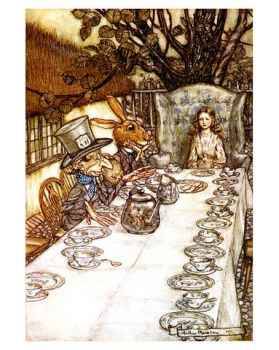The subtitle of this book is Twin Sisters and Their Journey Through Schizophrenia. The authors, Pamela Spiro Wagner and Carolyn S. Spiro, M.D., are identical twins. Pamela is the elder by five minutes and for as long as Carolyn (nicknamed "Lynnie") can remember, Pammie has been the first and the best. Pammie is the "smart one," destined to follow in their father's footsteps and become a doctor.
But Pammie has a secret she does not share with her identical twin: she hears voices. These voices tell sixth-grade Pammie that it is her fault that President Kennedy was killed. She is responsible. Pammie does not share this realization with anyone in the family.
Carolyn, on the other hand, is saddened by the President's death, but isn't really sure what assassinate means.
The book is written in alternating voices; first Pamela, then Carolyn. They are jealous of each other and yet recognize they have a unique bond. Their parents have assigned them roles in the family and Carolyn works hard to break out from her sister's shadow. They compete to see who can eat less, who can look most like Twiggy. Pammie was the dancer, but gradually loses confidence in her body and becomes awkward while Lynnie discovers that she loves dancing, going on to competitive ballroom dancing.
They are both freshmen at Brown University in 1970, deliberately not living with each other, but still nearby, when Pamela takes an overdose of Sominex. She spends most of a year in hospitals and halfway homes as doctors try different therapies. Eventually she is discharged, but there is no follow-up care.
Carolyn, meantime, decides to take a year off to dance in New York. During breaks between dance classes, she picks up a molecular biology book and discovers that she's fascinated. She transfers to Sarah Lawrence, graduates and is accepted at Harvard Medical. Pamela becomes stable enough to graduate Phi Beta Kappa from Brown in English. But she still hears voices. She is officially diagnosed as schizophrenic and begins the trial and error of finding treatments that work that she will stay on, that allow her to write, that allow her to function.
Throughout it all, Carolyn remains Pamela's lifeline. Pamela calls her at all hours just to talk. Or to scream obscenities and abuse. Carolyn, who is now a psychiatrist, is frustrated with the system because Pamela's doctors won't listen to her suggestions about treatment for her sister, her knowledge about what has worked and what will not. The rest of the family is there, but Carolyn bears the brunt of the burden. She feels guilty and overwhelmed and tired. She knows there is no cure for schizophrenia, only a lightening of the burden.
Pamela's personal crisis comes during Y2K, forcing Carolyn to consider choices she would rather not have to make.
This memoir is brutal in its honesty. Neither Carolyn nor Pamela are saints. Their parents and siblings are rarely mentioned. Carolyn mentions her marriage, her children, and her divorce but does not discuss them in any emotional detail. I wondered how she was able to cope with her patients, her children, her unsupportive (and seemingly immature) husband, and her sister's crisis without having a breakdown herself. Does Carolyn have a therapist as well as several close friends? She mentions she converted to Catholicism, but there is no explanation. Is her conversion related to her sister's schizophrenia?
Pamela and Carolyn assert they are identical twins, and they look it, but I thought there was a genetic component (a genetic vulnerability?) to schizophrenia, and Carolyn does not seem to have it. I wondered if they had any DNA testing done to confirm if they are identical, since there are cases where identical looking twins were, in fact, fraternal.
Overall, I was mildly disappointed in this book. I felt it was lacking something--some insight, some feeling, some emotional connection between the sisters or between them and their audience. But I wondered where the rest of the family was, especially when Pamela didn't shower and wore the same clothes for a week at a time in high school. Carolyn noticed and badgered her sister into taking a shower and changing--but where was Mom? Didn't she say anything to Pamela about her greasy hair, her dirty blouse? On the other hand, Pamela records what was going on in her mind and it is truly frightening. Her demons never leave her completely; the best she can do is relegate them to the background.
On the March Hare scale: 2 out of 5 Golden Bookmarks
Tuesday, February 20, 2007
Book Review: Divided Minds
Posted by
March Hare
at
9:21 PM
![]()
Labels: Book Reviews
Subscribe to:
Comment Feed (RSS)




|